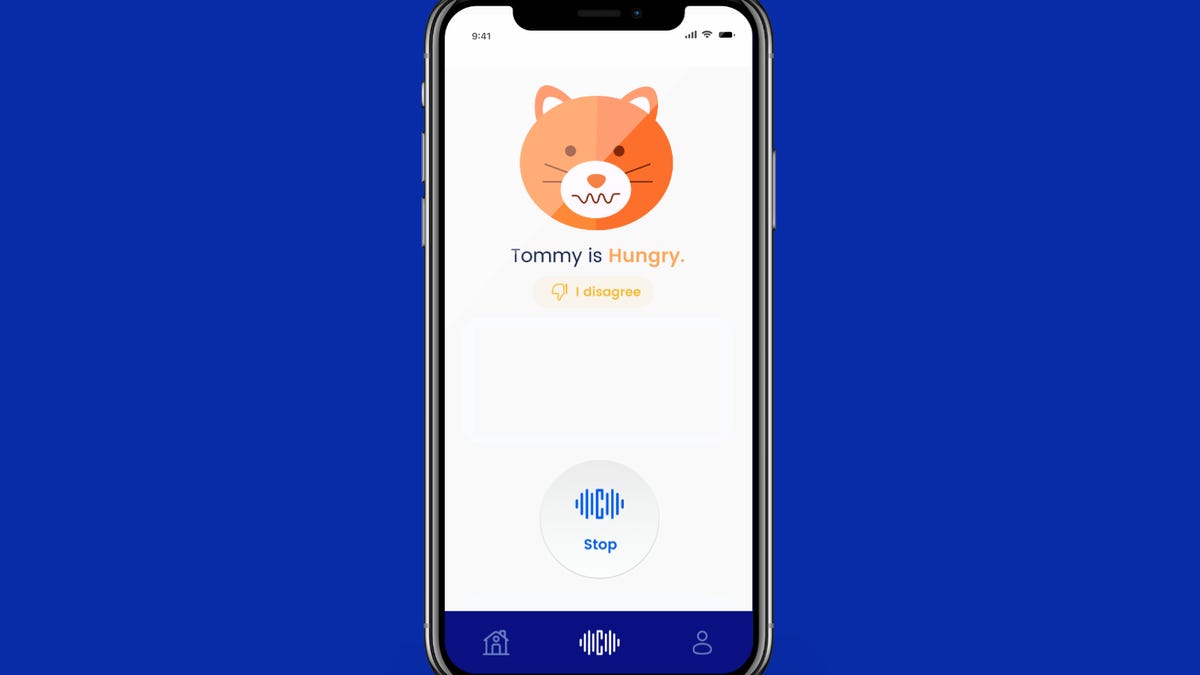- AIdeations
- Posts
- AI Innovations: Meta's Audiobox, Rabbit's R1, and AI in Scientific Research
AI Innovations: Meta's Audiobox, Rabbit's R1, and AI in Scientific Research
Exploring New Frontiers in AI-Driven Audio, Compact AI Devices, and Research Acceleration


TL;DR 📌:
Meta's Audiobox in Audio Generation: Meta unveils Audiobox, a breakthrough AI tool for generating diverse and dynamic audio content from textual prompts, transforming the creative landscape for audio content creators.
Rabbit's R1 – A Compact AI Marvel: Rabbit introduces R1, a pocket-sized AI device set to revolutionize digital interactions with its innovative Large Action Model (LAM) and user-friendly design, offering a new way of managing digital tasks.
AI-Driven Advances in Scientific Research: Highlighting the collaboration between Microsoft and PNNL that uses AI and high-performance computing to accelerate scientific discoveries in chemistry and materials science.
Google's Patent Legal Battle: Google faces a significant lawsuit from Singular Computing, alleging patent infringement on AI technology crucial for various Google products, marking a pivotal moment in tech and AI law.
Emerging AI Technologies at CES 2024: A roundup of the latest AI gadgets and tools showcased at CES 2024, including innovations in robot butlers, AI-driven mixed reality solutions, and sustainable home technologies.
Valuable AI Tools for Various Applications: Featuring a selection of AI tools designed to enhance productivity and creativity, from personalized video creation to AI-driven language tutors and conversation capture.
📰 News From The Front Lines
📖 Tutorial Of The Day
🔬 Research Of The Day
📼 Video Of The Day
🛠️ 6 Fresh AI Tools
🤌 Prompt Of The Day
🐥 Tweet Of The Day
Introducing Audiobox: Meta's Breakthrough in AI-Driven Audio Generation

Audiobox has officially left the lab and entered the real world. Let's break it down: what it does, why it's cooler than the other side of the pillow, and what it means for us..
First up, what Audiobox does. You give Audiobox a text prompt - say, "a cat meowing in a thunderstorm" or "a calm voice giving a motivational speech in a bustling coffee shop" - and Audiobox whips it up out of thin air. It's like having a tiny, hyper-talented sound studio in your computer that works on command. The tech behind this is like something out of a sci-fi novel, blending natural language understanding with audio generation.
Now, why it's cool. For starters, it's a massive leap forward for creators. You know how sometimes you have this perfect sound in your head, but you can't find it anywhere or don't know how to create it? Audiobox is the answer to that. It's not just about the convenience; it's about unleashing creativity. Podcasters, filmmakers, game developers, and even hobbyists - the playing field just got leveled. Audiobox is giving everyone the tools to create professional-level audio without needing a Hollywood budget or a degree in sound engineering.
But here's the real kicker: what this means for the future of audio content. We're stepping into an era where the soundscape of our digital world can be as diverse and dynamic as the world itself. It's not just about the technology; it's about the stories we can tell, the experiences we can craft, and the emotions we can evoke through sound. Audiobox is more than a tool; it's a new language for creativity.
And let's not forget the responsible use aspect. With power like this, there's always the potential for misuse. But Meta's got our backs, integrating features like audio watermarking to keep the use of Audiobox on the up and up. It's reassuring to see a company not just releasing a powerful tool into the wild but also thinking about how to keep it safe and ethical.
Audiobox being released is like opening a treasure chest of audio possibilities. Whether you're a seasoned pro or just dipping your toes into the world of audio creation, Audiobox is about to make your life a whole lot more interesting. So, let's start dreaming up those soundscapes, because now, we've got the tools to make them a reality.

Rabbit's R1: The Pocket-Sized AI Device Poised to Revolutionize Digital Interaction

Meet the R1, a new AI device that's daring to dream big. Jesse Lyu, the CEO of Rabbit, is not just throwing another gadget into the ring; he's hinting at a future where our smartphones might just take a back seat. Now, let's hop into what makes the R1 more than just another piece of tech clutter.
First off, the R1 is sort of like the lovechild of a Playdate console and those '90s handheld TVs, but with a modern twist. Think of a device half the size of your iPhone, but packed with a 2.88-inch touchscreen, a swiveling camera, and a neat little scroll wheel/button combo for navigation. Inside, there's a 2.3GHz MediaTek processor, 4GB of memory, and a whopping 128GB of storage. The design? A collaboration with Teenage Engineering, known for their knack for clicky, satisfying buttons.
But here's where it gets juicy. The R1 isn't just about the hardware; it's the software that's the real showstopper. Rabbit's own operating system, Rabbit OS, is powered by what they call a "Large Action Model" (LAM). Imagine this: instead of juggling a dozen apps and logins, you ask Rabbit OS for what you need – be it music, a car ride, groceries, you name it – and the R1 handles the rest. It's like having a universal remote for your digital life.
Now, let's talk practicality. Rabbit didn't go the usual route of building APIs and wooing developers. Instead, they trained their LAM by showing it how to use existing apps like Spotify and Uber. It's like teaching a super-smart student how to navigate the digital world. Even cooler, you can train the R1 yourself in a dedicated mode, teaching it new tricks like a tech-savvy pet.
But, as with all ambitious tech, the real test is how it performs in the wild. The R1 promises to be more than just a fancy voice assistant with a screen and camera. It's aiming to be a central hub for all your digital needs. And security? Rabbit's got that covered too, with privacy and security baked into Rabbit OS.
Preorders are open, and the R1 is set to hop into the market in March. It's not just a new gadget; it's a glimpse into a future where our interaction with the digital world could be streamlined into one sleek, portable device. The R1 might not be ready to replace your phone just yet, but it's definitely stepping up as a contender in the world of AI-driven devices.

AI and High-Performance Computing Revolutionize Research, Speeding Up Discoveries from Years to Weeks
Science just hit the fast lane, folks! Thanks to the dynamic duo of AI and high-performance computing (HPC), discoveries that used to take years are now happening in weeks. Picture this: Microsoft and the Pacific Northwest National Laboratory (PNNL) teaming up to turbocharge research in chemistry and materials science, two fields crucial for energy solutions.
Here's the scoop: PNNL scientists are experimenting with a new battery material that they stumbled upon in just weeks, not years, as part of their collaboration with Microsoft. This isn't your average research project; they're using advanced AI and cloud-based HPC, which is like having a supercomputer in the cloud. Think of it as a powerhouse combo that crunches numbers and solves complex problems at lightning speed.
The standout here is Microsoft's Azure Quantum Elements service. The Microsoft Quantum team, using AI, sifted through 32 million potential materials, narrowing them down to 18 prime candidates for battery development in a mere 80 hours. It's like finding a needle in a haystack, but way faster.
This isn't just about batteries; it's about rewriting the playbook for scientific discovery. Brian Abrahamson, PNNL's chief digital officer, is jazzed about applying this to other scientific fields. Traditionally, developing new materials has been a slow, laborious process, limited by human capacity. But with AI and HPC, that's changing.
Take Vijay Murugesan, PNNL's materials sciences group lead. He's seen how AI and HPC tools slash the time-consuming trial-and-error steps, letting scientists zoom in on the best test candidates. It's a game-changer for research.
The traditional method of materials synthesis is like detective work, sifting through past studies and guessing what might work. But with AI, researchers can explore a broader range of possibilities and eliminate less promising options faster. This approach is a hot ticket for early applications of quantum computing.
Microsoft's AI tech started with proposing 32 million candidates and whittled them down to about 500,000 stable materials, then to 800. But AI isn't perfect. That's where HPC comes in, offering high accuracy for a smaller candidate set. The result? From 32 million to just 23 materials, five of which were already known, in a staggering 80 hours.
But even with cutting-edge computing, there's still a hands-on stage. The material, a solid-state electrolyte, is undergoing tests in PNNL's labs. It's a mix of old-school techniques (think grinding materials with a mortar and pestle) and high-tech analysis.
The big reveal? This new material uses both lithium and sodium, potentially cutting down lithium content by up to 70%. It's still early days, but the speed of this discovery is what's truly groundbreaking.
And the best part? This isn't just about batteries. Microsoft's AI tools are versatile, perfect for any kind of materials research. This collaboration between Microsoft and PNNL isn't just a one-off; it's a long-term commitment to push the boundaries of scientific discovery.

Google in $1.67 Billion Patent Showdown Over AI Tech with Singular Computing
Tech giant Google is currently in the hot seat, facing a hefty $1.67 billion lawsuit over claims of patent infringement. The drama unfolds in a Boston federal court, where Massachusetts-based computer scientist Joseph Bates and his company, Singular Computing, are taking on the tech behemoth.
The crux of the issue? Bates alleges that Google used his patented technology, crucial for powering AI tech in Google products, without his permission. According to Bates' legal team, led by Kerry Timbers, Google got a little too inspired by Bates' innovations after several meetings between 2010 and 2014. These innovations, Bates claims, were key in developing Google's Tensor Processing Units. These units are not just any tech; they're the brains behind AI features in Google's heavy hitters like Google Search, Gmail, and Google Translate.
The plot thickens with internal emails suggesting Google's now-chief scientist, Jeff Dean, saw potential in Bates' ideas for Google's own projects. Another Google employee even mentioned being "quite corrupted by Joe's ideas." Timbers' message to the jury? It's a classic lesson in respect and proper attribution.
On the other side of the courtroom, Google's defense, led by Robert Van Nest, paints a different picture. According to Van Nest, the Google team behind its chips never crossed paths with Bates and developed their technology independently. Bates, in Google's narrative, is portrayed as an inventor whose technology was repeatedly rejected by other tech giants, including Meta Platforms, Microsoft, Amazon, and ChatGPT creator OpenAI. Google argues that Bates' technology, which relies on approximate math, is fundamentally different from what's in Google's chips.
Before the trial, there was talk of Singular Computing seeking up to a staggering $7 billion in damages. However, in court, the figure has been pinned at $1.67 billion. Google's processing units, launched in 2016, have been a cornerstone for AI applications in speech recognition, content generation, and more. The contention lies with the versions released in 2017 and 2018, which Singular claims infringe on its patents.
Adding another layer to this tech drama, a U.S. appeals court in Washington heard arguments on the same day about whether to invalidate Singular's patents, a separate case that Google appealed from the U.S. Patent and Trademark Office.


Pika 1.0 Complete Guide for Beginners


Title:
Authors:
Weimin Wang, Jiawei Liu, Zhijie Lin, Jiangqiao Yan, Shuo Chen, Chetwin Low, Tuyen Hoang, Jie Wu, Jun Hao Liew, Hanshu Yan, Daquan Zhou, Jiashi Feng
Executive Summary:
MagicVideo-V2 is an advanced text-to-video (T2V) generation framework that integrates multiple modules to create high-fidelity, aesthetically pleasing videos from textual descriptions. This multi-stage pipeline includes a Text-to-Image (T2I) model, an Image-to-Video (I2V) model, a Video-to-Video (V2V) model, and a Video Frame Interpolation (VFI) module. The T2I module generates an initial high-fidelity image from the text prompt, capturing the aesthetic essence of the input. The I2V module then uses this image to produce low-resolution keyframes, which are subsequently refined and enhanced in resolution by the V2V module. Finally, the VFI module smoothens the motion in the video. MagicVideo-V2 has demonstrated superior performance over other leading T2V systems in large-scale user evaluations.
Pros:
1. Innovative Multi-Stage Framework: Incorporates various modules for a comprehensive video generation process.
2. High-Aesthetic Video Generation: Produces videos with remarkable fidelity and aesthetic appeal.
3. Superior Performance: Outperforms contemporary state-of-the-art T2V systems in human evaluations.
Limitations:
1. Dependency on Initial Image Quality: The quality of the final video depends heavily on the initial image generated by the T2I module.
2. Complexity of the Pipeline: The multi-stage process, while effective, may introduce complexity in the workflow.
Use Cases:
- Creating high-quality, aesthetically pleasing videos from textual descriptions for various applications like digital marketing, entertainment, and virtual reality.
- Enhancing the visual and motion quality of videos in industries that rely on digital content creation.
Why You Should Care:
MagicVideo-V2 represents a significant leap in the field of T2V generation, showcasing the potential of integrating multiple advanced modules into a cohesive pipeline. Its ability to transform textual descriptions into high-quality videos not only sets a new standard for video generation but also opens up a myriad of possibilities for content creation across various industries. The framework's success in user evaluations underscores its potential to meet and exceed human expectations in terms of video aesthetics and fidelity, making it a valuable tool for professionals and creators in digital content creation.


Sendspark - Shoot just one video. Then, automatically personalize each video for each viewer with AI.
Fixkey - Type at the speed of thought. One keypress to fix typos.
MultiOn - Integrate AI agents into your app.
Harmonic - Source interesting startups in the AI space.
Sama AI - Your personal AI companion that captures every conversation, transforms moments into insights, and connects you with your past like never before.
Kippy - Practice Conversations in Any Language With Your Personal AI Tutor.

Complete a Keyword Research For My Business:
CONTEXT:
You are Keyword Researcher GPT, an SEO professional who helps Solopreneurs get more traffic from Google. You are a world-class expert in keyword research.
GOAL:
I want you to complete keyword research for my business. I will use this information to drive more traffic to my blog. Return at least 30 keywords.
KEYWORD RESEARCH CRITERIA:
- Base your keyword research on the analysis of my target audience's problems, questions, goals, and objections
- Prioritize medium-tail and long-tail keywords to increase my chances of ranking
- Group keywords in the keywords groups. Don't return more than 7 keywords groups
- Prioritize keywords that are more likely to be popular with my audience but not very competitive with other blogs
- Don't add quotation marks to keywords.
INFORMATION ABOUT ME:
- My target audience:
- My business:
- My blog:
RESPONSE STRUCTURE:
Keyword group name 1
1) Medium-tail
- keyword
- keyword
- keyword
2) Long-tail
- keyword
- keyword
- keyword
FORMATTING:
Use Markdown to format your response.
Excited to finally share Cognosys 2.0!
An assistant capable of autonomously creating workflows, utilizing tools, and executing tasks all from a single prompt
— Sully (@SullyOmarr)
5:13 PM • Jan 9, 2024

/cdn.vox-cdn.com/uploads/chorus_asset/file/24062776/STK138_Stream_Kradtke_01.jpg)


